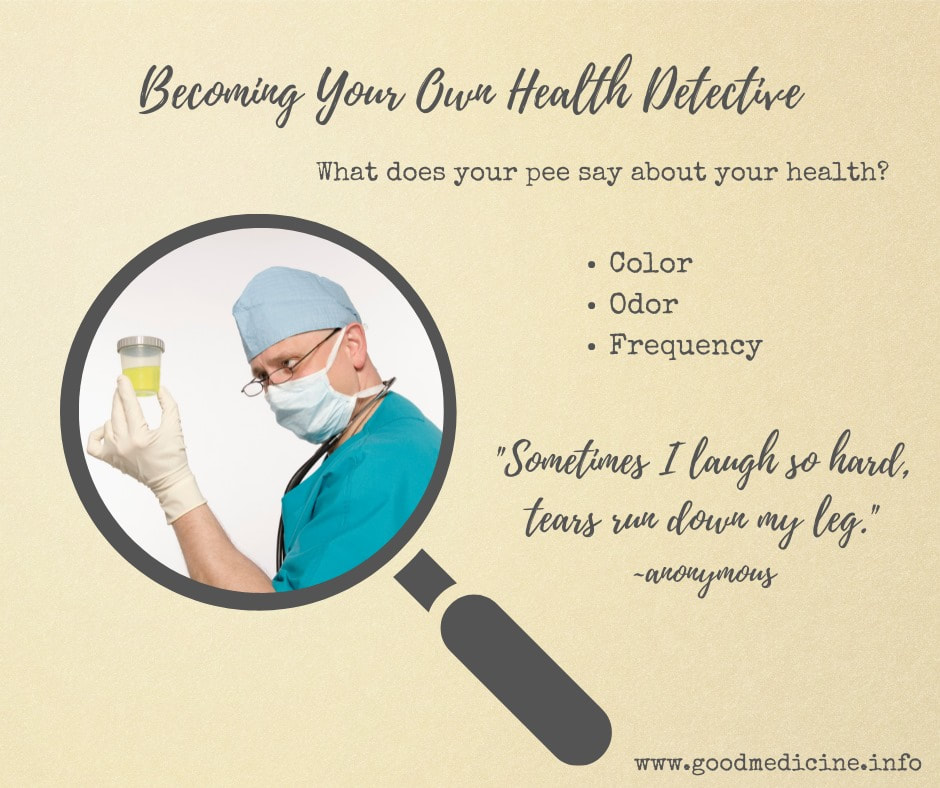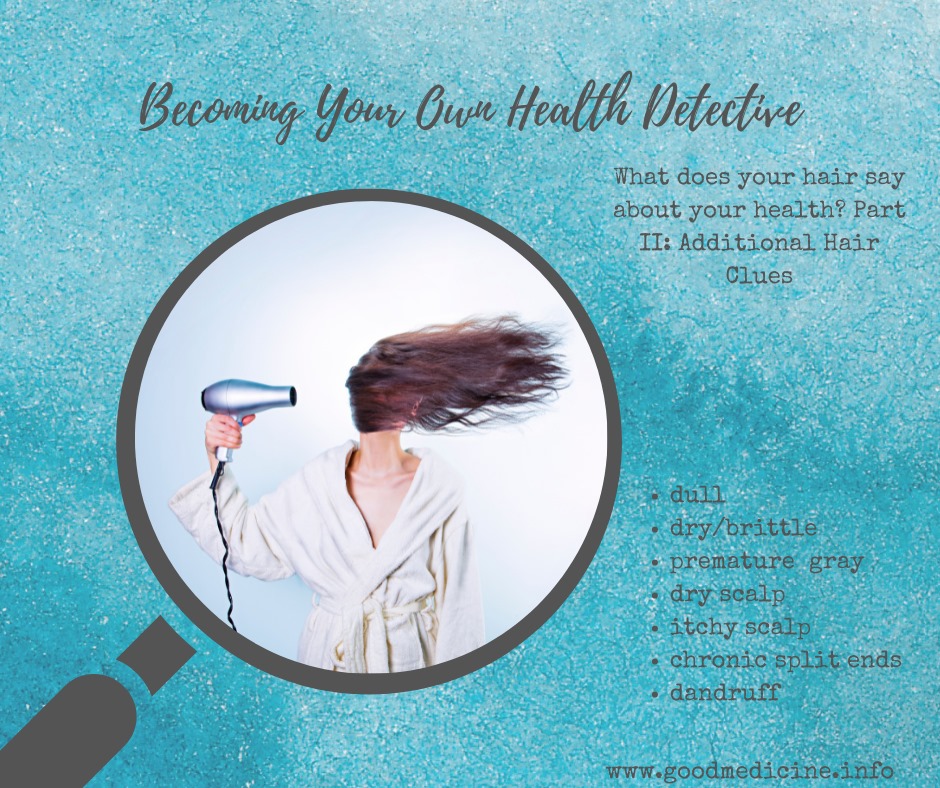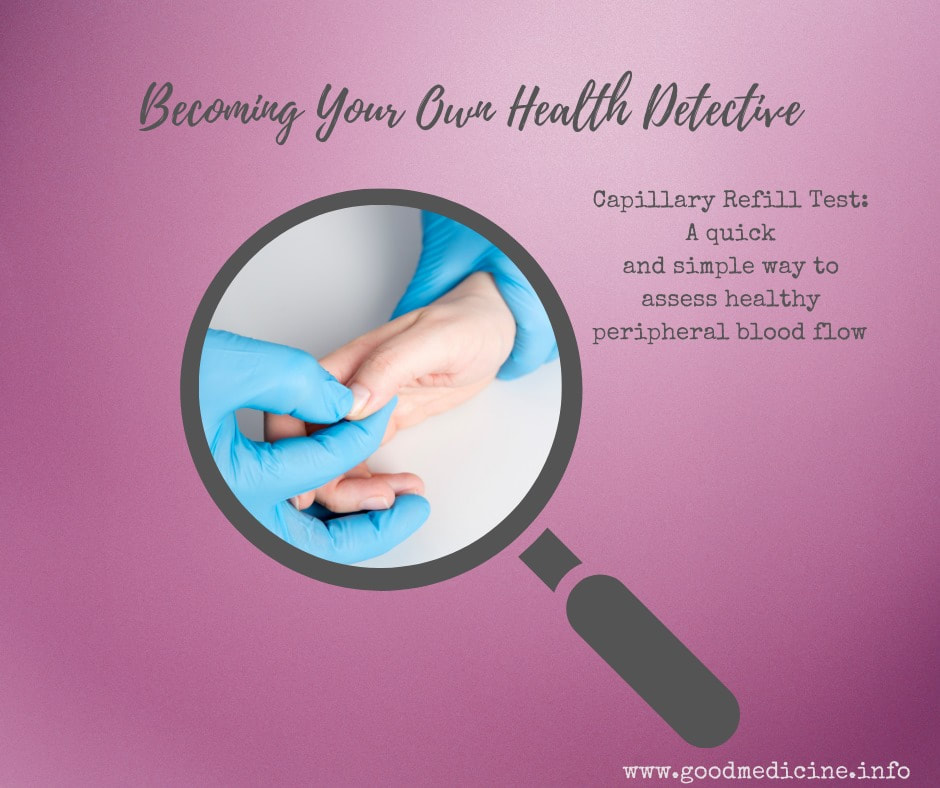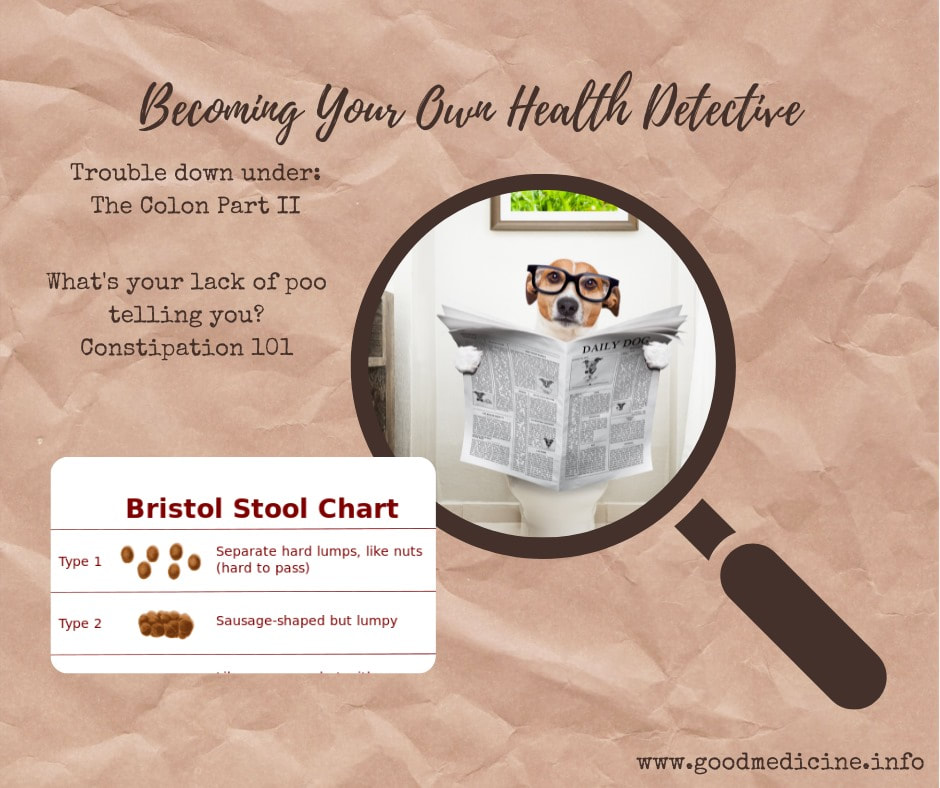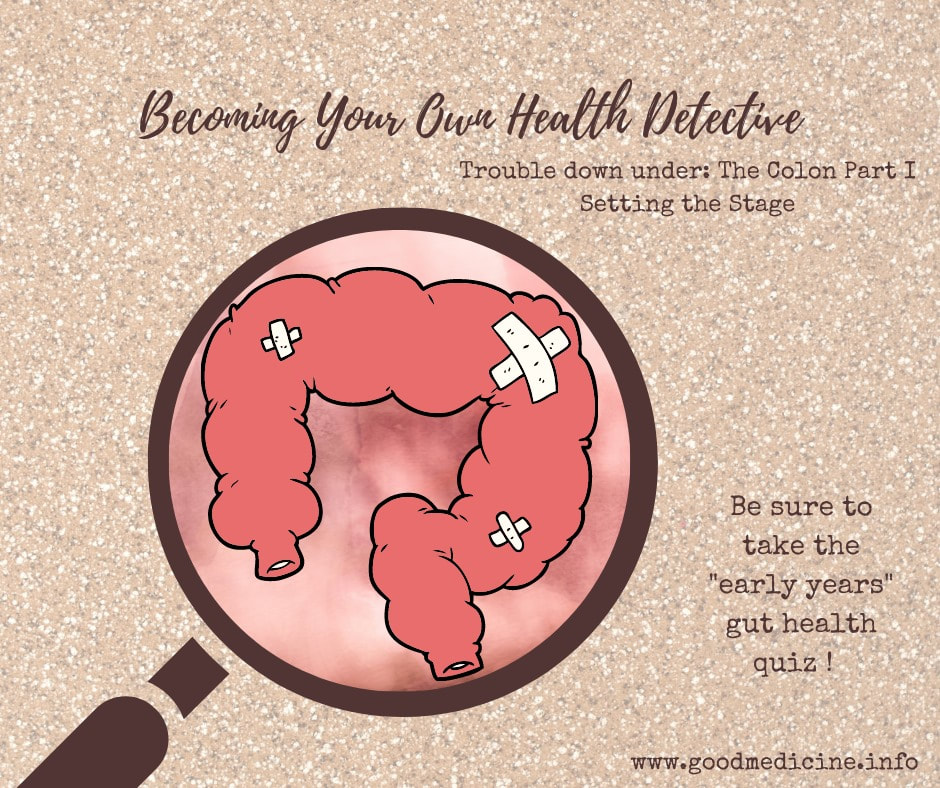What does your pee say about your health? Part I
Have you noticed that body fluids often take center stage in a crime scene? The same is true in a health detective scenario. A urinalysis may reveal such things as hyperglycemia, diabetes, kidney stones, blood in the urine, or a bacterial infection. Even without an official set of eyeballs and a urinalysis machine, the average Joe (or Jill) can still glean much from examining their “pee life”.
*Urine is a pretty interesting body fluid. As the body breaks down amino acids, ammonia (a potent toxin) is left over as waste. Ammonia is then broken down into urea (predominately by the liver), combined with water, and then flushed out of the body through the kidneys and bladder.
*Urine is 95% water & 5% urea combined with other solids. Those “other solids” typically contain over 3000 chemical compounds which result from daily exposure ……ie: what we eat or drink, drug byproducts, bacterial waste, household chemicals, skin care products, pollution, work related toxins, etc. As you might imagine, chronic exposure to some of these more nefarious compounds can cause some unpleasant effects on the kidneys and bladder over time. Thankfully, we have Young Living clean skincare, the Savvy makeup line, and the Thieves Household Cleaner which can eliminate many routes of daily toxin exposure.
*Urine color is an easy clue to observe. Ideally, urine should be a “pale lemonade” color. If the yellow color is any darker than this, it is usually a sign of dehydration. The more dehydrated a person is, the darker yellow the urine will be. Dehydration can be acute or chronic (often seen in the elderly), and can easily lead to brain fog, headaches, dizziness and constipation. Considering an estimated 75% of the USA population is chronically dehydrated, this may be a VERY IMPORTANT CLUE to monitor regularly.
*Red or pink urine may be a clue that there is blood in urine (Time to involve a health professional). Bear in mind, foods such as beets, blackberries, and rhubarb may turn urine pink in some people!
*Urine which has a brownish to orangish tinge may also reflect dehydration or an underlying liver condition. (Hint: if urine is dark and stools are light in color, the liver is likely struggling). There is a serious medical condition called rhabdomyolysis that can also cause this color change. Rhabo is caused by muscle breakdown in the body, and can happen as a result of a traumatic event, over exertion, or as a possible side effect from statins (a class of cholesterol lowering medications) and some of the newer vaccines. A medication called phenazopyridine will usually turn urine reddish orange as a non harmful side effect.
*Cloudy urine is often a sign of an impending urinary tract infection or kidney stones.
*Foaming or “fizzy” urine may indicate excess protein in the diet. If this type of urine is a regular occurrence, it may be time to bring it to the attention of your favorite healthcare professional.
If you’d like to show your 💛kidneys and bladder💛 a little extra love, let me introduce you to Young Living’s K&B liquid supplement. Those who know and use K&B love her well and do not want to imagine life without her!
*NingXia Red is another way to shower some serious love on your 💛kidneys and bladder💛 (as well as the rest of your body).
See you next week…. We’ll chat about the clues behind urine odor and frequent trips to the bathroom.
xoxo~ liz
#sharingiscaring
#goodmedicine
#whatismypeetellingme
#ThanksYL
